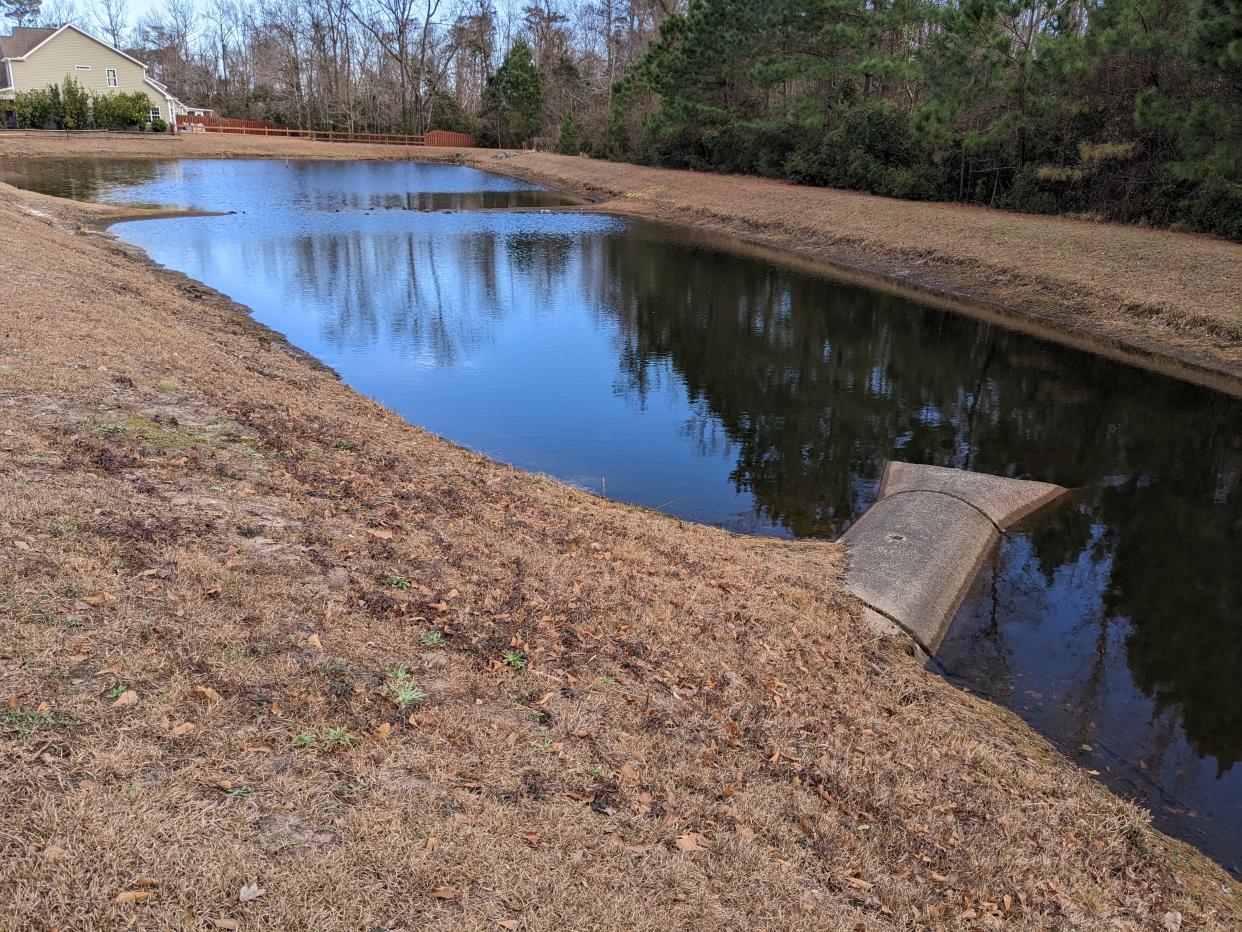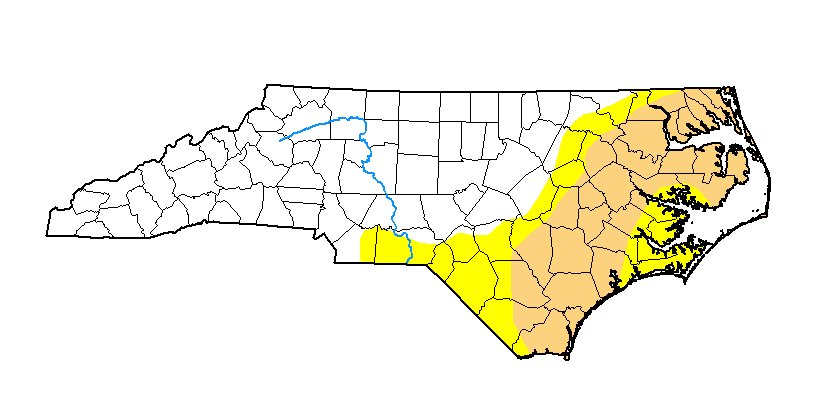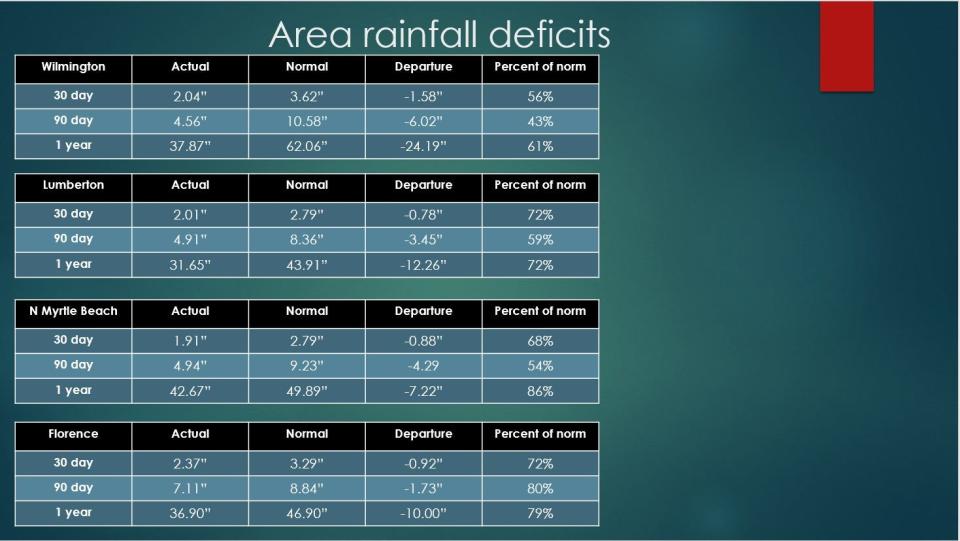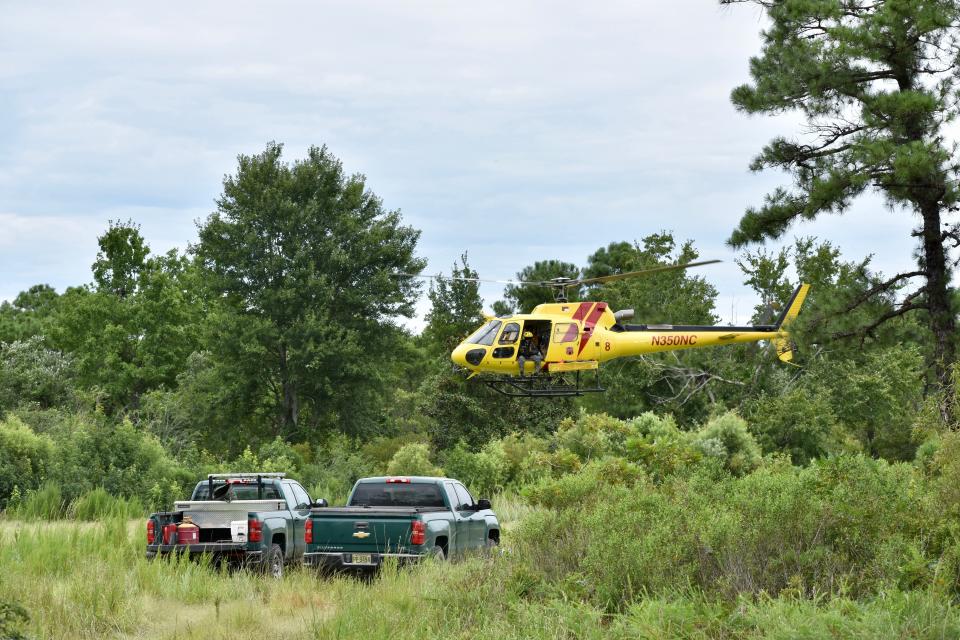Q&A: Why Wilmington and Eastern NC are still in drought despite recent rains

Bill Langley was doing something he hadn't done in Wilmington for a long time on Monday − dodging puddles.
Walking his usual lunchtime trek around the parking lots at Olsen Park in northern New Hanover County, Langley said he was happy to finally see some significant precipitation fall in Southeastern North Carolina after months of largely dry skies.
"We need it," he said, pointing to one of the park's relatively dry retention ponds. "Can't go into spring and summer without rain."

For the second fall-winter period, much of Eastern North Carolina is mired in drought. And despite recent heavy rains, it's going to take a lot more to put the region on an even footing heading into the warmer months.
Still, there's hope on the horizon that things will stabilize before the spring planting season and visitors start descending on the region's beaches for the summer tourism season.
How were things looking coming into 2023?
Not good. Wilmington ended up at about 60% of normal rainfall amounts for 2022, with the dry weather carrying into the year from a drought-driven fall 2021. After some soggy summer months, drought re-emerged in the fall and has been present ever since.
That parched feeling continued in many areas until last weekend, when substantial storms finally reached the area.
How much rain did we get earlier this week?
A lot. According to the National Weather Service (NWS) office in Wilmington, 1.79 inches fell in the Port City on Sunday. That was within 0.03 inches of setting a record for the day. For all of January, 2.22 inches of rain has fallen in Wilmington − nearly 0.75 inches below normal levels for the month.

"That's definitely helped us catch up a bit," said Bob Bright, a meteorologist with the NWS in Wilmington, of this week's rains. "But we still have a ways to go."
Where do things stand now?
According to the U.S. Drought Monitor, 43% of North Carolina − covering 1.35 million residents − is experiencing drought or abnormally dry conditions. Almost all of the areas in drought are east of I-95, with the driest swathe running from the Wilmington area north toward Elizabeth City and the Hampton Roads area of Virginia.

"Conditions are expected to persist over the next three months," states the most recent update for North Carolina.
As of Jan. 19, the Wilmington weather service says the Port City had received 37.9 inches of rain in the previous 12 months, only 61% of normal levels.
So what does it mean for me?
A drought, or even worse back-to-back droughts, is never a good thing. But officials said if you're going to have them, fall-winter is the best time. That's because it's after most harvests, before the major planting season, and prior to when hordes of visitors descend on the region's beaches and coastal towns, adding demand and strain to local water systems.
There are currently minimal water system restrictions tied to the dry weather across Eastern North Carolina.
More:Pretty and sustainable: Why native NC plants can be good for your garden and the coast
But sustained low-water levels can stress local ecosystems, drying up ponds and creeks, lowering water flows, allowing salt water to push further inland as freshwater flows fall off, and creating additional pressures for vegetation as soil moisture levels fall.
If our dry weather continues it also could stress residential lawns and gardens as the warmer weather spurs growth. A continued lack of rain also could see groundwater levels drop, putting pressure on towns and residents that rely on wells for drinking water.
State and local officials also are asking residents doing any kind of outdoor burnings to be vigilant and monitor their fires, since many areas are still exceedingly dry.
How do the next few months look?
As mentioned earlier, federal officials expect the region's drought to continue into spring.
But one big catalyst of the region's back-to-back droughts, La Nina weather conditions in the South Pacific, appears to be ending.
According to a Jan. 12 post published by NOAA's Climate Prediction Center, officials expect La Nina to fizzle out by March or April, transitioning to neutral conditions. That generally leads to near normal weather patterns across the planet.
Odds are also increasing that an El Nino weather pattern could develop this summer, which would likely produce more moisture for the Southeastern U.S.
But nothing is a sure thing.
"That's no guarantee that this spring will be a wet one, but it does offer some hope that we won't be dealing with a La Nina hangover where we struggle to get over its symptoms," said Corey Davis, North Carolina's assistant state climatologist.
SUPER STORMSLearning from Hurricane Ian: Why we should prepare for more storms like it
It also could bring one added advantage to coastal Carolina residents: El Nino generally results in a slight decrease in hurricane development in the tropics.
While tropical systems can be drought busters, officials say it's better not to rely on them for adequate rainfall, since the storms can be unpredictable and bring other damaging impacts, including gale-force winds, tidal surges, and inland flooding, with them.
Reporter Gareth McGrath can be reached at GMcGrath@Gannett.com or @GarethMcGrathSN on Twitter. This story was produced with financial support from 1Earth Fund and the Prentice Foundation. The USA TODAY Network maintains full editorial control of the work.
This article originally appeared on Wilmington StarNews: Eastern North Carolina remains in drought for second straight winter

